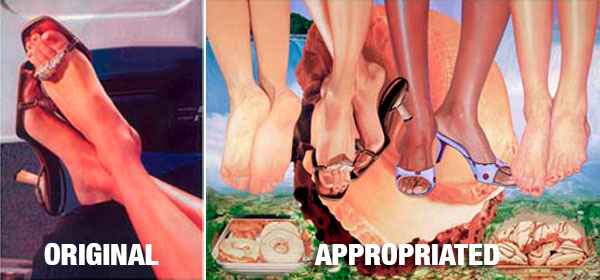As we tap into the powers of Illustrator and its ability to process raster images, we are met with some aesthetic and moral decisions. Specifically, “How much of the work do I let this machine do for me?” This opens up an interesting topic. Widespread availability to computers and software is bringing more and more people to explore design and digital art – good news and bad news, right? These programs have a lot “under the hood”, and most people ignore that and just “grab the wheel and drive.” This leads to bad work, usually, or at least to “canned” work – with the touch of a button, we’ve created a masterpiece.
Why am I getting into this discussion now? Because you are about to get your hands on another one of those buttons. My job here is to help you figure out how to make that button a very valuable tool and push it to the limits. I also need to help you see merit in taking the longer path, working harder to bring your own voice into your work.
You will get to Trace images with the magic button, and you will trace images with your own hands. Both techniques will prove to bring interesting, compelling work to the table, and you will leave hopefully knowing when is the right time for the right approach to your creative work.
SESSION INSIGHT
In this round of enrichment, we will be working with the process of converting raster images (photos, sketches, etc.) into new vector artwork. And this brings up some interesting issues about originality vs. repurposing or appropriation. Repurposing means taking something that had an original use or purpose and plugging it in to a new form or place and giving it a new life. This can be anything from beer bottles used as lamps, shower doors used as greenhouse walls, old jazz beats used in new hip hop songs, etc.
Appropriation art has been described “as getting the hand out of art and putting the brain in.” This technique borrows images from popular culture, advertising, the mass media, other artists, etc. and assembles them into a new art piece under one’s own artistic twist. There is a lot of controversy and confusion about artists’ rights, copyright, infringement of an artist’s original work and much more when talking about this subject. And there is a ton of gray area here. Some people have used the excuse of, “if an image is changed by 15% or more, then it’s no longer protected by copyright.” Others say there’s no amount of changing that makes it original work. If someone took a picture, it’s theirs and any derivatives are under their control as well. If you want to use the picture, either get the rights to do so or grab a camera and take your own picture. In a way, I think that this is the safest approach, even though it is not accurate. I am a big fan of providing as much of your own source material as possible. Need a photo of a tree? Go take one rather than just ripping one off the internet. I’m such a hypocrite – I do that all the time. There – I said it.
An interesting case on this topic arose in 2006 between Andrea Blanch, a fashion photographer, and Jeff Koons, an appropriation artist. In Blanch v. Koons it was ruled that a collage painting including a close representation of a photograph was sufficiently transformative because compared to Blanch’s original photograph, Koons completely inverted the legs’ orientation, painting them to surreally dangle or float over the other elements of the painting. Koons also changed the coloring and added a heel to one of the feet, which had been completely obscured in Blanch’s photograph.
Here are the two images:

As students at The University of Montana, you fall under the protective factor of “educational use,” meaning while you do work for class assignments, most source material is considered available for creative use. BUT – the second you create something outside of the class, you are walking a much thinner line, and could find yourself dealing with upset artists and LAWYERS! YUCK!
So, as you get going on your Tracing projects, keep all this in mind. But most important, push your creative limits and be original, even though Mark Twain said “There is no such thing as a new idea.”
I like to think of our Tracing projects as digital collages – where the design is assembled using various found (or created) elements. I really want you to think of these pieces as being more than just one image that you trace an turn into vector. That’s too easy. Much of the prep work for these assignments will be similar to how a traditional artist might approach a collage – digging through old magazines, newspapers or photos. Searching for interesting objects that have pattern or texture or form. Sure, you might do all of this via the internet, or maybe you drag your camera or smart phone into some thrift shops or second hand stores and capture your own.
If you’ve never messed around with a collage, check out these videos to give you some insight into the process and interesting techniques, then see if you can translate any of that work into the digital realm using Illustrator.
Topics: Image Trace, Live Paint
• Image Trace
Converting raster images into vector forms.
• Image Trace pt.2
Continuing with more tracing.
• Live Paint
We learn how to turn traces and other artwork into dynamic paintable objects.
Here is an updated look at the trace tools in CS6 and CC. Pretty much the same process, but it seems like Adobe felt like making this process less user-friendly…
